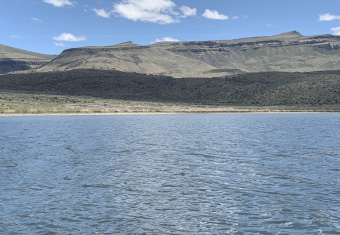

Abstract
The Summit Lake population of Lahontan cutthroat trout (Oncorhynchus clarkii henshawi, LCT) are one of the last two remaining lake-dwelling populations of LCT. Due to natural habitat loss, water resource extraction, and the introduction of nonnative species, LCT abundance and distribution have declined over the last century instigating their inclusion on the US endangered species list. Because Summit Lake is located in the desert of northwestern Nevada, the local LCT population is highly sensitive to the effects of anthropogenic climate change such as changes in temperature and precipitation. Working in collaboration with the Summit Lake Paiute Tribe, I propose to reconstruct the population history of Lahontan cutthroat trout using novel sedimentary ancient DNA analyses to determine how LCT have responded to past environmental disturbances to aid in the development of effective trout management strategies. First, I will analyze DNA extracted from a sediment core spanning the last 12,000 years to measure LCT through time to understand how environmental stressors impact population numbers. Second, I will assess overall levels of fish biodiversity in Summit Lake by identifying all fish species present throughout the sediment record. Finally, I will develop an assay to characterize the phylogenetic diversity of Lahontan cutthroat trout to determine how fluctuating population sizes have impacted overall genetic diversity. This research represents a novel application of sedimentary ancient DNA analysis to conservation science and will inform future Lahontan cutthroat trout management strategies at Summit Lake as well as provide tools for the continued monitoring of this population.
